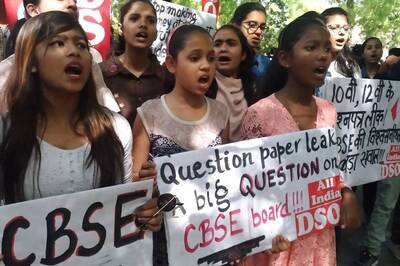
views
New Delhi: Costlier protein-based items and fruits pushed up the food inflation to a two-and-a-half month high of 9.13 per cent for the week ended June 11, prompting Finance Minister Pranab Mukherjee to say that price rise needs to be contained as high inflationary regime was unacceptable.
As per the Wholesale Price Index (WPI) data released by the government today, fruits became dearer by 28.66 per cent, milk by 15.30 per cent, onions by 11.89 per cent and egg, meat and fish by 10.56 per cent, adding to the woes of common man.
"... We are in region of high inflationary regime, which is not acceptable. It will have to be brought down," Mukherjee told reporters in New Delhi.
Food inflation was 8.96 per cent in the previous week and 23 per cent a year ago. The previous high at 9.18 per cent was recorded for the week ended March 26, 2011.
The headline inflation, which includes inflation of food and non-food primary items and manufactured products, stood at 9.06 per cent in May.
According to experts, monsoon could play an important role in determining the prices of essential items.
"If monsoon rains are not normal, foodgrain production could plummet. However, even in case of a good monsoon it is necessary to have adequate infrastructure and supply chain in place to ensure that provisions reach the markets in time," said Deloitte, Haskin & Sells director Anis Chakravarty.
The latest surge in food inflation comes close on the heels of the India Meteorological Department's (IMD) forecast that monsoon rains are expected to be below normal at 95 per cent of the Long Period Average (LPA), with margin for error of plus or minus 4 per cent.
A below normal monsoon can have a serious fallout on the agricultural output.
"Detailed analysis of food items indicate that it is substantially contributed by the milk products, poultry products, fish and certain other items," Mukherjee said.
He, however, expressed satisfaction that inflation in overall primary articles came down during the week.
Overall, primary articles reported inflation of 12.62 per cent during the period under review, down from 12.86 per cent in the previous week.
Experts, however, warned that high rate of price rise of food items could translate into higher headline inflation numbers in the next few months.
"If this kind of high prices continue to prevail in the food segment, it could impact the headline inflation numbers also," Chakravarty said.
The Reserve Bank had said it expects inflationary pressure to remain during the first half of this fiscal.
"The monsoon is expected to be low and thus food inflation should remain high," KASSA director Siddharth Shankar said.
Both Shankar and Chakravarty said that repeated rate hikes by the RBI has failed to curb price rise and added that alternative price stabilisation mechanism like supply chain management and storage facilities are required to deal with inflation in the food and primary articles segment.
The RBI has already hiked key policy rates 10 times since March, 2010, to tame demand and curb inflation.
"Just earlier this week we read about the likelihood of foodgrains rotting in godowns due to lack of infrastructure. Such issues have to be addressed," Chakravarty said.
However, RBI Deputy Governor Subir Gokarn said the forecast of 'below normal' monsoon rains does not pose too much threat to food inflation as long as the country's central part receives close to normal rains.
"The central part is where there is lot of concentration of pulses and cereals... If rainfall in that part of the country remains close to normal, I do not think there will be any pressure," he said in Chennai.
Meanwhile, inflation of non-food primary articles stood at 18.43 per cent for the week ended June 11 as against 20.20 per cent during the previous week.
Fibres grew more expensive by 43.77 per cent and minerals by 25.90 per cent. Fuel and power became dearer by 12.84 per cent and petrol was up 33.23 per cent year-on-year.
Referring to the non-food items, Mukherjee said they have "been steadily declining from 23.82 per cent just a month back... every subsequent week from May 7 to June 11 it has steadily declined. That is one important aspect."
Commenting on the latest numbers, Crisil chief economist D K Joshi said: "There is an upward pressure on food inflation... However, I do expect food prices to remain in single digits and below the last year's level. Monsoon will play an important role in stabilising the food prices."
He, however, said that going forward, there is likely to be a rise in the non-food category, especially fibre and fuel.
The latest surge in food inflation numbers belies the RBI's recent claim that headline inflation would be mostly driven by commodity prices in the next few months and the rate of price rise in food items would moderate.
Overall inflation was mostly driven by high food prices in 2010.
Food inflation was in double digits for most of last year, before showing signs of moderation since March this year. However, it has again started going up since the second half of May.



















Comments
0 comment